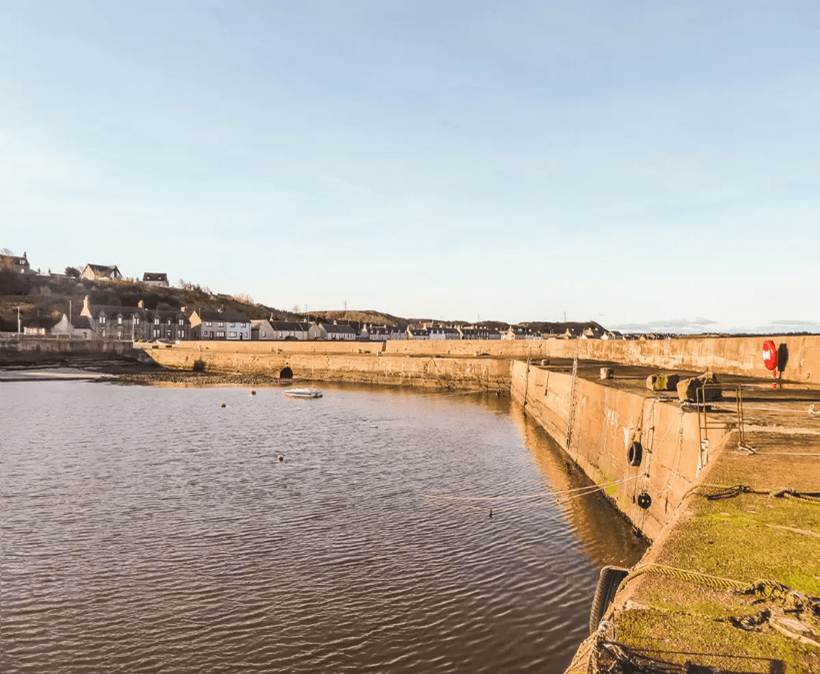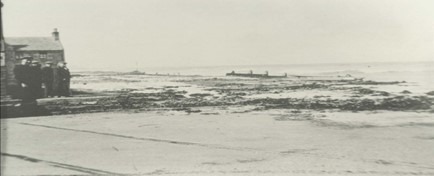
Portgordon is a beautiful coastal village located in Moray, Scotland, known for its stunning sunsets and occasional auroras. The village’s unique location and natural surroundings make it a popular destination for nature lovers and photographers alike.
The village is also famous for its resident seals, which can often be seen basking on the rocks or swimming in the waters near the Harbour. The Portgordon seals have become a popular tourist attraction, drawing visitors from far and wide to witness these.
Portgordon has become a popular spot for seal watching, with many visitors flocking to the village to catch a glimpse of these fascinating creatures. There are several vantage points along the coastline where visitors can observe the seals, including the Harbour wall, the cliffs above the beach, and the old pier. The best time to see the seals is during the summer months, when they come to the coast to breed and raise their young.
Another natural phenomenon that occasionally graces Portgordon with its presence is the aurora borealis, or Northern Lights. Although not as frequent as in other parts of Scotland, Portgordon’s location far from city lights and pollution makes it a prime spot to observe the auroras when they do occur. On clear nights, visitors can witness the sky turning into a mesmerizing dance of greens, blues, and purples, as the charged particles from the sun collide with the Earth’s magnetic field.
Portgordon is a hidden gem in Scotland, offering stunning sunsets and occasional auroras that are sure to leave visitors in awe. Whether you’re a photographer or just someone who loves nature, a visit to Portgordon is a must-do experience that you won’t forget.



The History of Portgordon
In 1797 Portgordon, or more precisely Port Gordon, was the third new village to be founded by Alexander 4th Duke of Gordon. This was some twenty years after the establishment of Tomintoul and Fochabers and gave them all important access to the sea. Stones shipped from Lossiemouth were used in the construction of the harbour and for many years it was a more important port than Buckie. Apart from fishing there was a considerable trade in the export of grain from the hinterland and the import of salt, coal, and bones for processing into fertiliser. Not surprisingly, almost 100 years later, the harbour was unfit for purpose and was totally reconstructed and enlarged to accommodate the increased number of boats registered at Portgordon. This time it was under the auspices of Charles Gordon-Lennox, 6th Duke of Richmond. It was to be another hundred years before the next improvement came.
This time in the shape of the 69th Gurkha Independent Field Squadron who addressed the major decay to the historic structure. The Moray Firth Coast Railway came to Portgordon in 1886 increasing transportation for business and work opportunities. Shipbuilding in nearby Kingston had almost petered out by the beginning of the 1900s and the years 1903 – 1915 may be regarded as the golden age of boat building in Portgordon.
Steam drifters were in great demand and the village was a hive of industry. Not only boats, but many substantial houses were built reflecting the increased prosperity and shops and public houses flourished. Most households in Port Gordon did not benefit from electricity until 1940s or 50s. this resulted in its dubious title ‘Paraffin City’.
The community however warmed to this and in 2001 happily chose the name “The Lampie Hoose” for the community hub housed in the historic building in Gordon Square. Through it all – the ups and downs of village life, Portgordon has retained its school, central to the community where education for all has been paramount and lifelong friendships have been forged.

Useful Links
Portgordon Community Trust – Find out what is happening in the local community
